Complete Solutions to Numerical MCQs Single options Correct of chapter ELECTROSTATICS of Class 12 book with complete answers and questions
| Class 12 | PHYSICS |
| Chapter | ELECTROSTATICS |
| PHYSICS GALAXY | Numerical MCQs Single options Correct |
| Number Of Questions | 64 |
| Academic Year | 2023-24 |
A particle of charge
 where ,
where ,
View SolutionElectric charge is uniformly distributed along a along straight wire of radius

View SolutionA copper(density of Cu=
View SolutionA particle of mass m and charge q is fastened to one end of a string of length. The other end of the string is fixed to the point O. The whole sytem liles on as frictionless horizontal plane. Initially, the mass is at rest at A. A uniform electric field in the direction shown in then switfched on. Then

View SolutionA small ball of masss m and charge +q tied with a string of length l, rotating in a veticle circle under gravity and a uniform horizontal electric field E as shown. The tension in the string will be minimum for

View SolutionIf unifrom electric filed
View SolutionTwo metal pieces having a potential difference of
View SolutionA sphere of radius 2R has a uniform charge density p. The difference in the electric potential at r = R and r = 0 from the centre is:
View SolutionA sphere of radius R carries charge density p proportional to the square of the distance from the centre such that
View SolutionThe work done in bringing a
View SolutionIn an electric field region, the electric potential varies along the x-axis as shown in the graph. The

View SolutionTwo spheres A and B of radii 17 cm each and having charges of 1 and 2 coulombs respectively are separated by a distance of SO cm. The electric field at a point on the line joining the centres of two spheres is approximately zero at some distance from the sphere A. The electric potential at this point is:
View SolutionElectric potential at any point in a region is given as
In this region the magnitude of the electric field is:
View SolutionA charge
View SolutionA charge
View SolutionThe displacement of a chrage
View SolutionA non-conducting ring ofradius 0.5 m carries a total charge of
View SolutionThree semi-infinite rods uniformly charged out of which one is negatively charged and other two are positively charged are kept perpendicular to plane of paper outward such that the finite ends of the rods are located at points A, B and C on a circle of radius R as shown in figure. The net electric field at centre of circle O is :
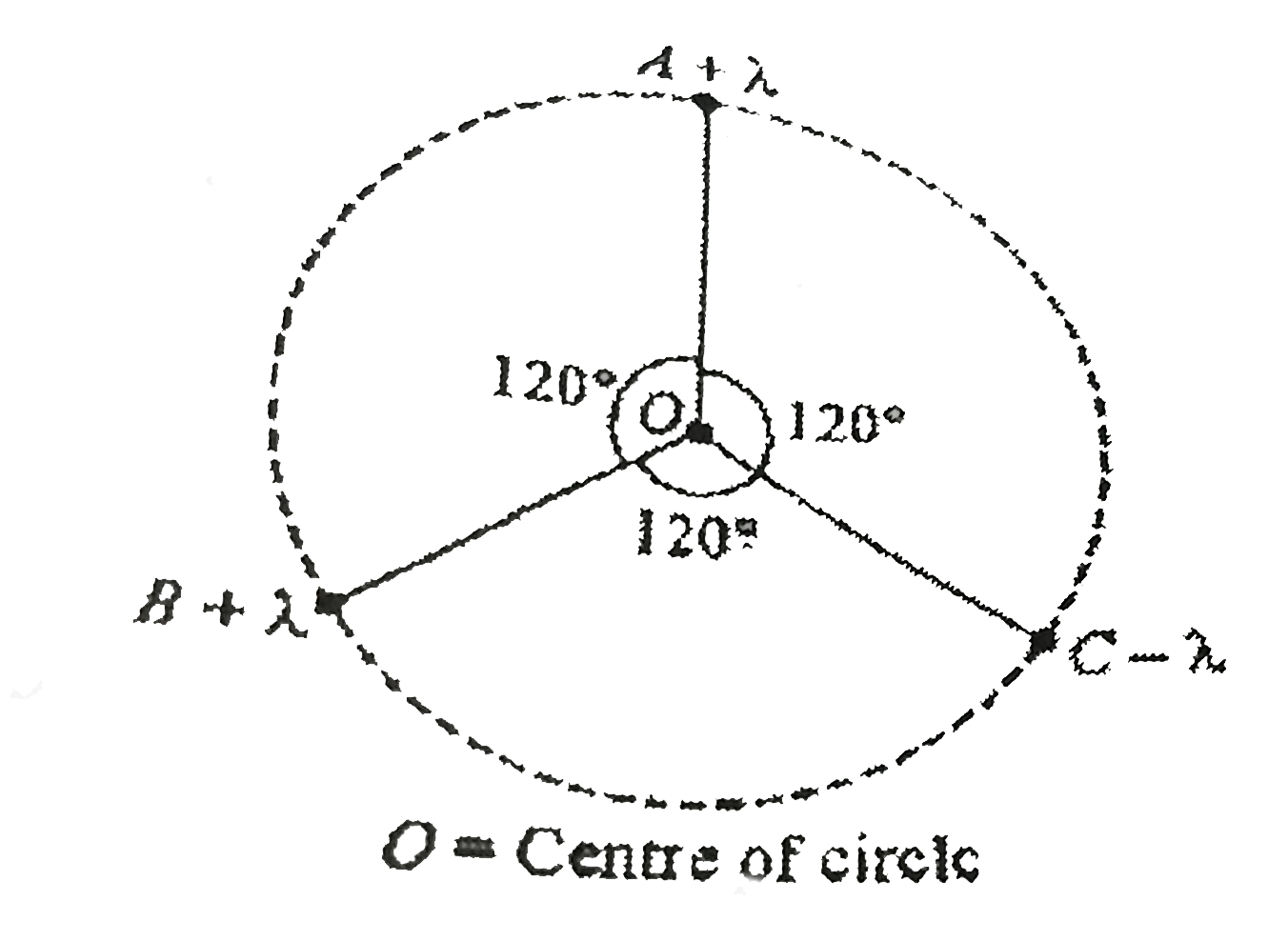
View SolutionTwo small balls of mass Meach carrying charges

View SolutionA particle of mass m and charge

View SolutionThe grid (each square of
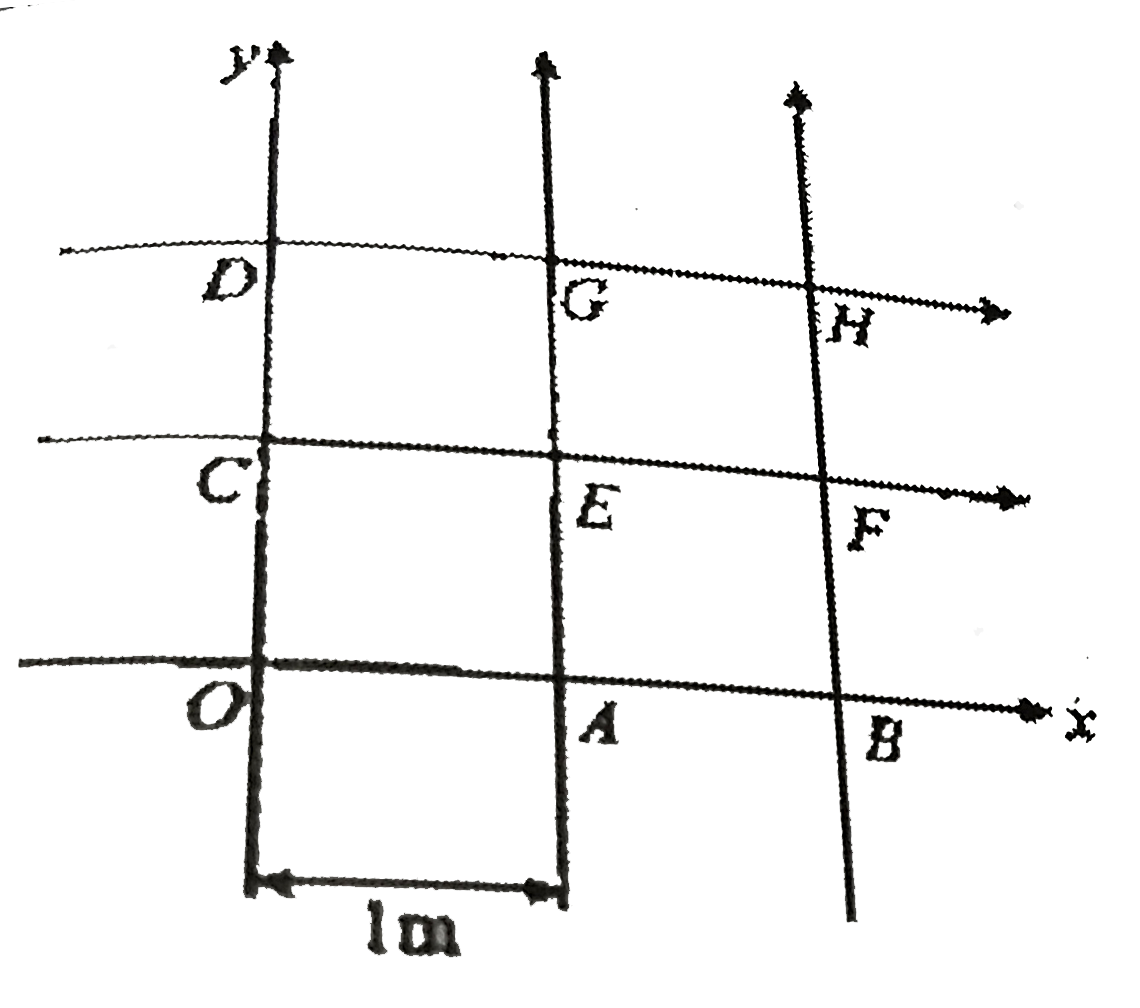
View SolutionAt a certain distance from a point charge, the field intensity is
View SolutionTwo insulting plates are both uniformly charged in such a way that the potential difference between them is
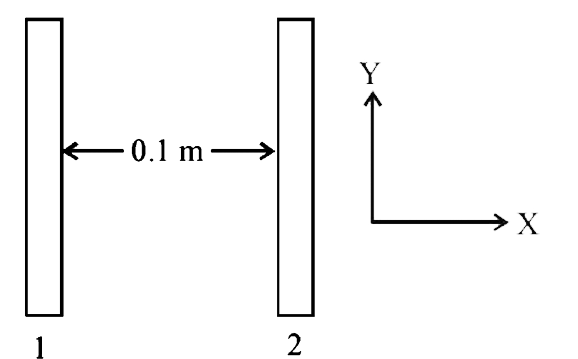
View SolutionQ charge is uniformaly distributed over the same surface of a right circular cone of semi -vertical angle theta and height h The cone is uniformly rotated about its axis at angular velocity omega Calculated associated magnetic dipole moment
 .
.
View SolutionA conducting rod of length I rotates about its one end with angolar velocity ro. Potential difference between A and B points ofrod as shown in figore

View SolutionA tiny spherical oil drop carrying a net charge q is balanced in still air with a vertical uniform electric field of strength
View SolutionThe two ends of a rubber string of negligible mass and having unstretched length 24cm are fixed at the same height as shown. A small object is attached to the string in its midpoint due to which the depression h of the object in equilibrium is 5cm. Then the small object is charged and a vertical electric field

View SolutionLet there be a spherically symmetric charge distribution with charge density varying as
View SolutionThe ratio of the electric force between two electrons to the gravitational force between them is of the order of
View SolutionTwo points charges
View SolutionAn electric field is uniform, and in the positive x-direction for positive x, and uniform with the same magnitude , but in the negative x-direction for negative x. It is given that
(a) What is the net outward flux through the side of the cylinder ? (b) What is the net outward flux through the cyclinder ? (c) what is net charge inside the cylinder ?
View SolutionA solid conducting sphere ofradius 5.0 cm has a charge of 0.25nC distributed uniformly on its surface. If point A is located at the centre of the sphere and a point Bis 15cm from the center, what is the magnitude of the electric potential difference between these two points ?
View SolutionAn electric dipole is placed perpendicular to an infinite line of charge at same distance as shown in figure. Identify the correct statement.

View SolutionS is a solid neutral conducting sphere. A point charge q of 1 × 10–6 C is placed at point A. C is the centre of sphere and AB is a tangent. BC = 3m and AB = 4m.
(1) The electric potential of the conductor is 1.8 kV
(2) The electric potential of the conductor is 2.25 kV
(3) The electric potential at B due to induced charges on the sphere is – 0.45 kV
(4) The electric potential at B due to induced charges on the sphere is 0.45 kV

View SolutionIf the potential at the centre of a uniformly charged hollow sphere of radus R is V, then electric field at a distance r from the centre of sphere will be

View SolutionAn isolated conduction sphere sphere whose radius
View SolutionA charged rod have continuous charge distribution having density
View SolutionThree concentric spherical metallic shells A, B and C of radii a, b and c (a lt b ltc) have surface charge densities
`(i) Find the potential of the three shells A, B and C.
(ii) If the shells A and C are at the same potential, obtain the relation between the radii a, b and c.
View SolutionA and B are two concentric spherical shells. If A is given a charge

View SolutionThe electrostatic potential due to the charge configuration at point P as shown in figure for bltlta is

View SolutionTwo thin wire rings each having radius R are placed at distance d apart with their axes coinciding. The charges on the two are
View SolutionIn a certain region of space, electric field is along the z-direction throughout. The magnitude of electric field is , however, not constant but increases uniformly along the positive z-direction. At the rate of
View SolutionThere are two uncharged identicasl metallic spheres 1 and 2 of radius r separated by a distance
View SolutionTwo small identical metal balls of radius rare at a distance a
View SolutionIn the diagram shown the charge

View SolutionA bullet of mass m and charge q is fired towards a solid uniformly charge sphere of radius R and total charge +q. If it strikes the surface of sphere with speed u, find the minimum value of u so that it can penetrate through the sphere. (Neglect all resistance force or friction acting on bullet except electrostatic forces)
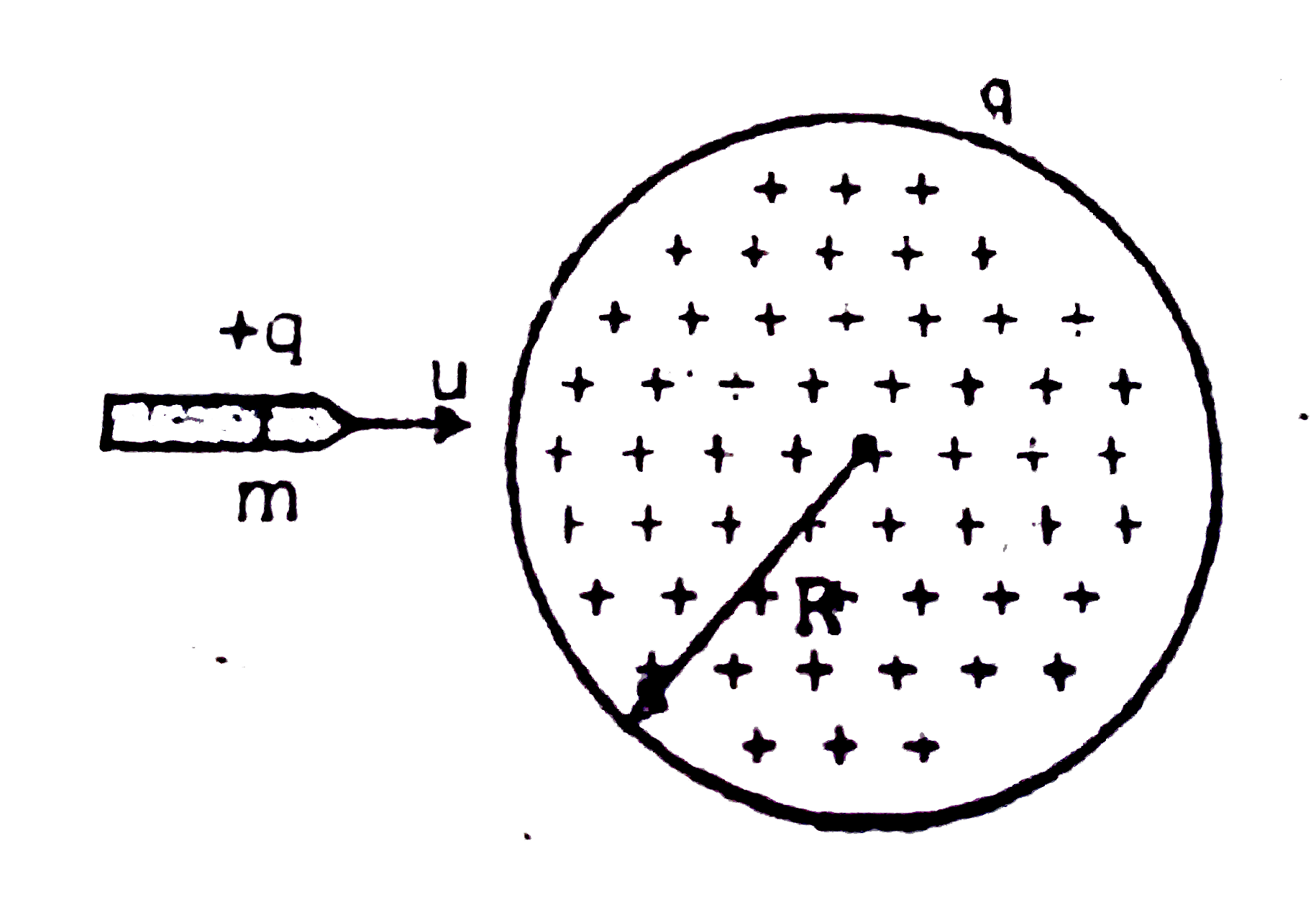
View SolutionA charged particle of mass
View SolutionConsider the shown uniform solid insulating sphere of mass m with a short and light electric dipole moment
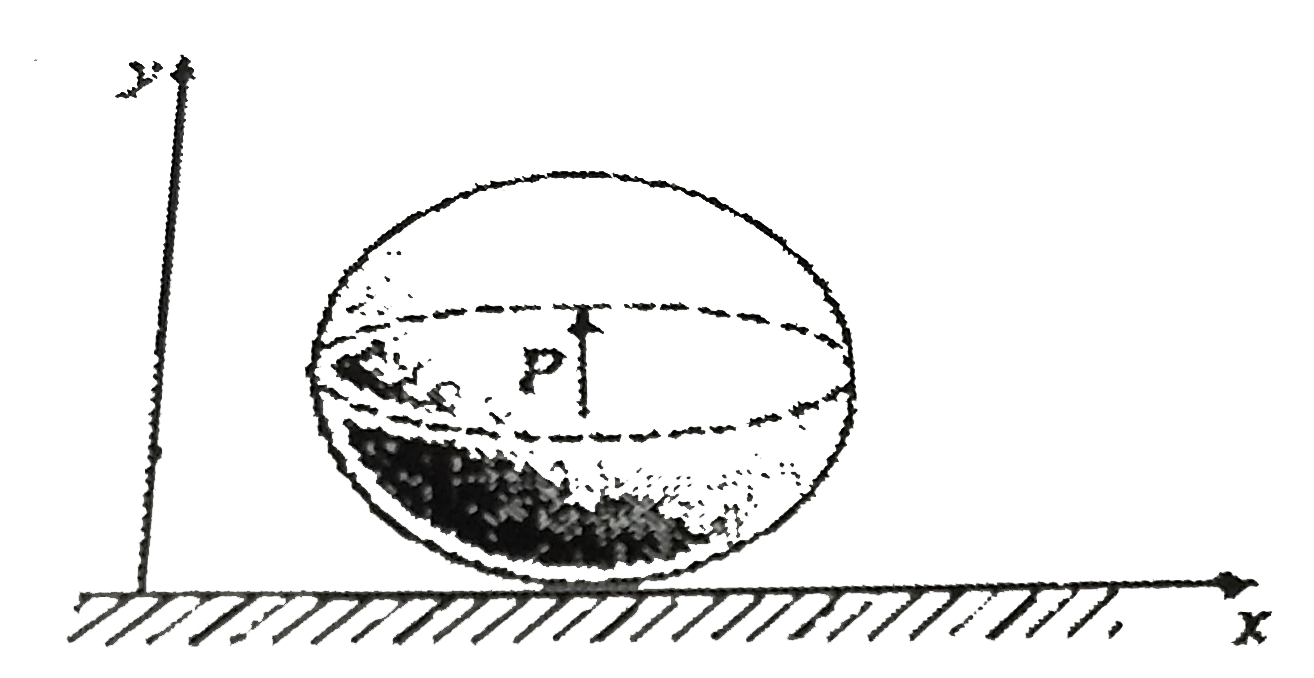
View SolutionA ring of diameter d is rotated in a uniform electric field until the position of maximum electric flux is found. The flux is found to be
View SolutionA block of mass m and charge q is connected to a point 0 with help ofan inextensible string. The system in on a horizontal table. An electric field is switched on in direction perpendicular to string. What will be tension in string when it become parallel to electric field?

View SolutionThe electric potential
View SolutionA solid sphere having uniform charge density
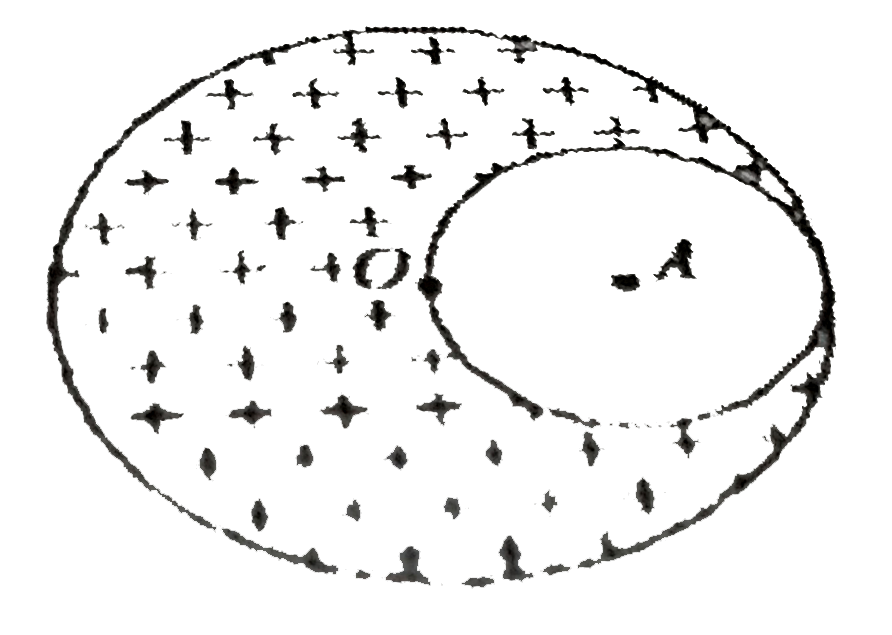
View SolutionInitially the spheres A and B are at potentials

View SolutionA charge q is placed at the centre of the line joining two equal charges Q. The system of the three charges will be in equilibrium if q is equal to:
View SolutionA thin non-conducting ring or radius a has a linear charge density

View SolutionThe locus of the points (in the
View SolutionA ring of radius

View SolutionA semi-infinite insulating rod has linear charge density

View SolutionTwo spherical conductors B and C having equal radii and cayying equal charges on them repel each other with a force F when kept apart at some distance. A third spherical conductor having same radius as that B but uncharged is brought in contact with B, then brought in contact with C and finally removed away from both. The new force of repulsion between B and C is
View SolutionTwo insulated charged spheres of radii
View SolutionA uniform electric field of strength E exists in region. A electron enters a point A with velocity v as shown. It moves through the electric field and reaches at point B. Velocity particle at B is
Then

View SolutionThe potential at a point x ( measured in
View SolutionFour charges
View SolutionA particle of mass m and charge

View Solution
Numerical MCQs Single options Correct questions and complete solutions for chapter ELECTROSTATICS of GK PUBLICATIONS PHYSICS (HINGLISH) of Class 12
All Exercises from PHYSICS GALAXY Class 12 PHYSICS ELECTROSTATICS
- Advance MCQs
- Conceptual MCQs single option correct
- Discussion Question
- Illustrative Example
- Numerical MCQs Single options Correct
- Partice Exercise
- Partice Exercise 1.1
- Partice Exercise 1.10
- Partice Exercise 1.2
- Partice Exercise 1.3
- Partice Exercise 1.4
- Partice Exercise 1.5
- Partice Exercise 1.6
- Partice Exercise 1.7
- Partice Exercise 1.8
- Partice Exercise 1.9
- Unsolved Numberical Problems